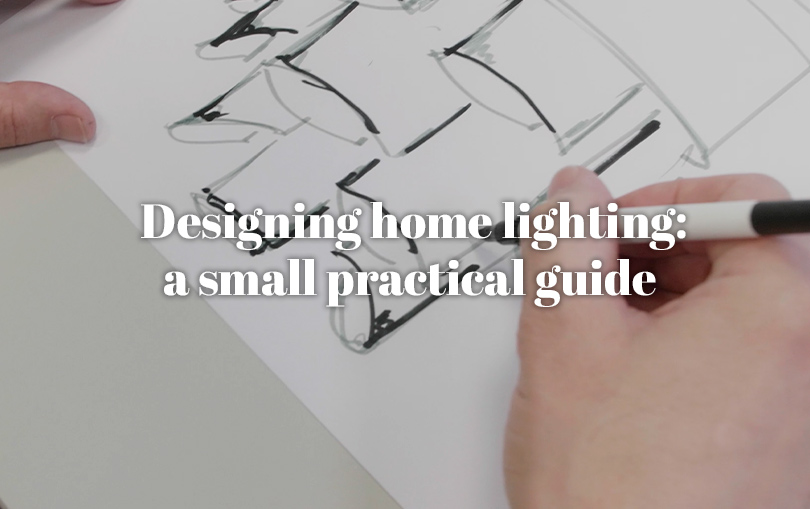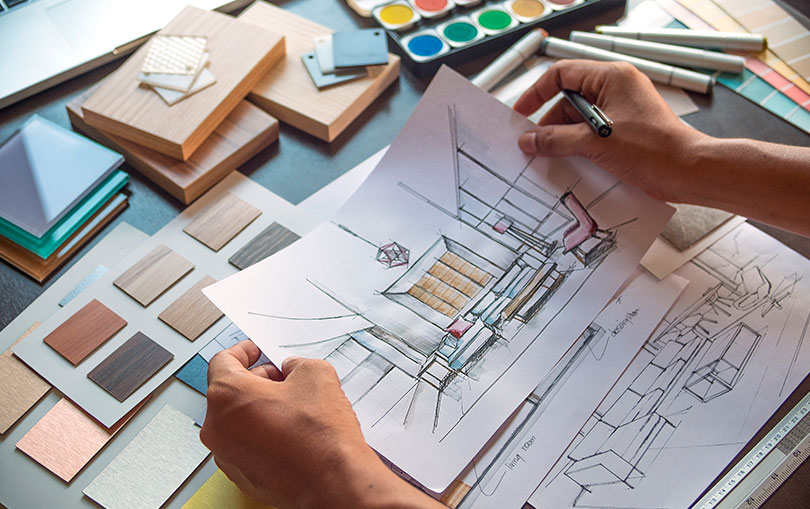DESIGNING HOME LIGHTING: A SMALL PRACTICAL GUIDE
PATRIZIA VOLPATO’S ADVICE FOR AN OPTIMAL DESIGN LIGHTING PROJECT
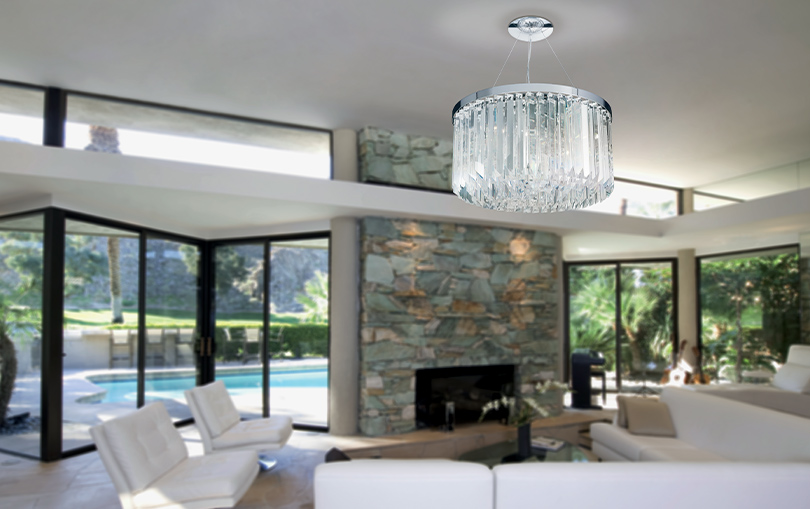
To get the best results in terms of furnishings and functionality, you can’t just choose to buy a chandelier. The visual impact and the residential well-being are not only given by the structural characteristics of the home, by the selected type of furniture or by the good thermal and acoustic insulation of the house, but also by the proper lighting of the rooms, so that it does not strain the eyes and thanks to the communication with interior decoration and spaces.
In the design or renovation of the home, unfortunately, the lighting design is often not taken into consideration until the final stage, when choices that can compromise the creation of optimal lighting have already been made.
It is a mistake that should be avoided, as light and internal lighting have a direct relationship with the interior design of the rooms and the well-being perceived by living in the single rooms.
Artificial light has a practical function – it allows us to see when natural light is missing – and, at the same time, it has a furnishing function. If carefully designed, home lighting can create scenographic effects and impressive angles.
Let’s see, together, how to design home lighting and the mistakes to avoid.
LIGHTING DESIGN: WHERE TO START?
We must start from the assumption that the lighting design must be planned in the construction phase – or renovation – of the home to avoid high subsequent adaptation costs.
The lighting design must take into account the different needs and functions of the rooms in order to identify the number of light points needed inside the room to carry out the various daily activities, also considering a series of parameters, including:
- Size of the room.
- Colours chosen for the walls.
- Materials used for flooring and furniture.
- Source of natural light.
- Luminance.
The size of the room determines the number of lighting fixtures and the needed power of the light to achieve optimal lighting, while the colour of the walls affects refraction: a room with light walls will have greater refraction than a space with dark walls.
Likewise, the materials used – tiled floor, parquet, dark or light wood furniture etc. – influence the choice of lighting systems both for optimisation of the light and for the type of lighting fixtures.
We have already talked extensively about the layout of the home and the sources of light in a previous article, which we refer to for further information on the subject, luminance instead consists of a scale that sector professionals use to calculate the perception of the human eye and avoid eye strain.
In fact, if natural light varies during the day based on the time of day, on weather conditions and on the season, artificial light is stable and must suit the needs of usage and the well-being of the person.
To achieve a good lighting design, it is therefore essential to carry out a lighting calculation to define the illuminance values and, consequently, establish the quantity and power of the lighting fixtures that have to be installed in order to guarantee well-lit environments and the highest quality of liveability of the home.
HOW TO CHOOSE THE TYPE OF LIGHTING, INSTALL THE LIGHTING POINTS AND CHOOSE THE LIGHTING FIXTURES
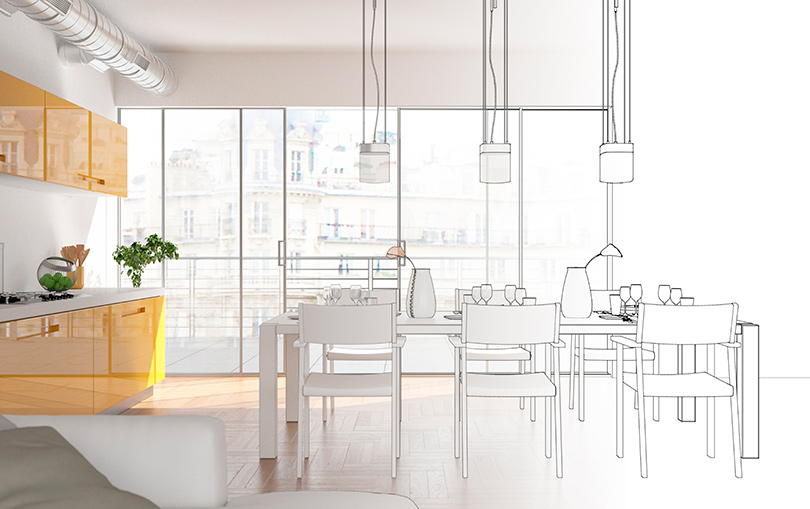
Once the size and sources of light have been assessed, it is time to take into consideration the interior design and the position of doors, windows, furniture, sofas and so on in order to decide which points to light up more and which ones need a more subdued light.
This stage is very important because installing the light points does not only mean establishing how many and which lighting fixtures to place, but also defining the number of switches and sockets and is closely linked to the electrical system.
Once the lighting design has been defined, it is time to choose the lighting fixtures and the type of lighting.
The choice varies between pendant chandeliers, wall lights, spotlights, floor lamps and table lamps. The best way to achieve optimal lighting is to use three different sources of light to create particular contrasts and atmospheres:
- Main lighting
Produces a uniform diffusion of light.
This effect is achieved with a lighting fixture positioned in the central part of the room, such as the ceiling chandelier, ceiling light (or a pendant light which, if equipped with a dimmable light, also produces an effect of variability of the lighting power and adaptation of the amount of light according to the needs or the atmosphere that you want to create in a particular moment.
- Indirect lighting
It is an indirect light used to create atmosphere such as, for example, the one produced by wall lights or by lights hidden in empty spaces, in order to create delicate and suggestive atmospheres.
- Accent and functional lighting
It is the type of lighting that is used to highlight certain details and direct the eye towards specific points or areas. For this type of lighting, spotlights such as those proposed in the Quadri collection can be used or floor lamps such as, for example, those proposed in the Sfera collection.
Another aspect to consider is the type of light: is it better to have warm or cold light?
The help of a professional can be very useful in this case, as the choice can emphasise the colours of the furnishings and improve the final effect.
LED LIGHTS: ENERGY SAVING, WARMTH AND LIGHT COLOUR
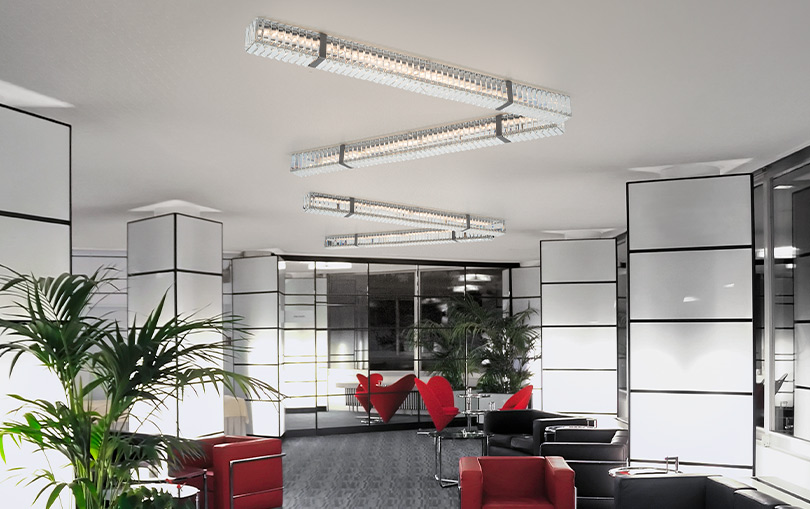
The choice of light bulbs also determines the warmth of the light – a technical detail that is not always easy to understand, but which influences the perception of the light in terms of colour and visual effect.
On the market, we can find different types of light bulbs, from classic incandescent light bulbs to modern LEDs.
What is the difference between one type of light bulb and another?
Let’s see what the main differences are.
INCANDESCENT LIGHT BULBS
It is the traditional light bulb, based on a tungsten filament, which is electrically heated to a high temperature inside a light bulb in which an inert gas is present, preventing the filament from burning out too quickly. This process requires a high use of electricity, and, for this reason, it is generally replaced by more convenient and innovative systems.
ENERGY-SAVING LAMPS
They are the advanced version of halogen lamps (the evolution of incandescent light bulbs which, however, have a short life and are therefore not recommended) and have optimal energy efficiency. However, they have an unbalanced and unnatural light spectrum and are therefore only recommended where high-quality light or colour performance is not important.
LED LIGHTS
They are considered the best solution for lighting because they consume little – allowing for considerable energy savings – and have a long life. Furthermore, they allow for great flexibility in terms of dimmability and of the colour of the light.
And therefore, when choosing the lighting fixtures for your home, don’t forget to consider the concept of energy saving and sustainability.
Patrizia Volpato offers you a wide selection of modern and classic lamps and chandeliers, ideal for creating the best lighting designs. Discover all of the collections!


